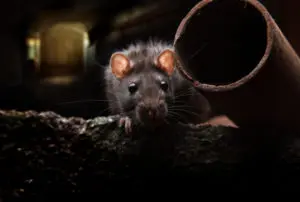Are Mice and Rats Related?
Rats and mice can easily be confused with one another. After all, they have a lot of similarities. More often than not, people try to tell them apart based on their size alone. If one sees a tiny rodent with a long tail, one will label it as a mouse. On the other hand, they would say it was a rat if it were much bigger.
While this is generally accurate, there are many more ways to tell them apart (and connect them to one another). Below, we discuss the differences between mice and rats, how the two rodents are related, and what you should do if you have either one living in your home.
Similarities Between Mice and Rats
The two species are classified as rodents and descended from the same ancestor species called anagalids but belong to different genera. Scientific terms aside, their genetics would make them more like cousins than siblings.
Their ancestor existed just around the time that dinosaurs became extinct, which has given them more than enough time to evolve into the three different genetic lines we know today, namely:
Mice and rats share similar features and have a lot in common regarding their behaviors. For instance, both rodents are nocturnal and share some affinity with humans, which keeps them close enough to civilization.
Their similarities can be mainly attributed to the fact that they share the same environment, leading them to acquire common traits fit to survive the habitat.
Differences Between Mice and Rats
Rarely do we get the chance to see a mouse and a rat side-by-side. Moreover, what are the chances you can observe both of them long enough to tell the many differences between them?
Because of this, it is highly understandable to get them mixed up. However, knowing which kind of infestation you are dealing with can make a difference in your treatment plan. For future reference, below is a quick guide on how you can tell them apart.
- An adult mouse is about two to four inches long, while an adult rat can measure seven to nine inches. However, a young rat can be similar in size to a mouse.
- Both can be white, brown, or gray, but only rats can be black.
- Rats produce between 20 to 50 droppings per day, while mice produce between 40 to 100 droppings per day. You may be dealing with mice if you notice much more droppings in your home.
- Mice usually have hairy tails, while rats have hairless and scaly tails.
- Rats have curved-looking noses, while mice have sharper noses with longer whiskers.
- Mice have vastly disproportionate ears, while rats would have ears more proportionate to their body.
Regarding behavior, mice tend to be more curious and adventurous, while rats are more timid and scared.
How To Treat Mouse and Rat Infestations?
Either type of rodent can cause damage to your property by gnawing on structures, cutting wires, or contaminating your food and water source. They can also cause health problems since they easily transmit bacteria and other diseases.
When treating infestations, the main differences between the two are their amount of curiosity and the type of food they like.
It is easier to catch mice than rats because they are naturally bolder and fearless, which means they would likely fall for traps while checking to see your bait.
When it comes to food, rats are more likely to be tempted by the smell of meat, while mice would opt for sweeter options.


